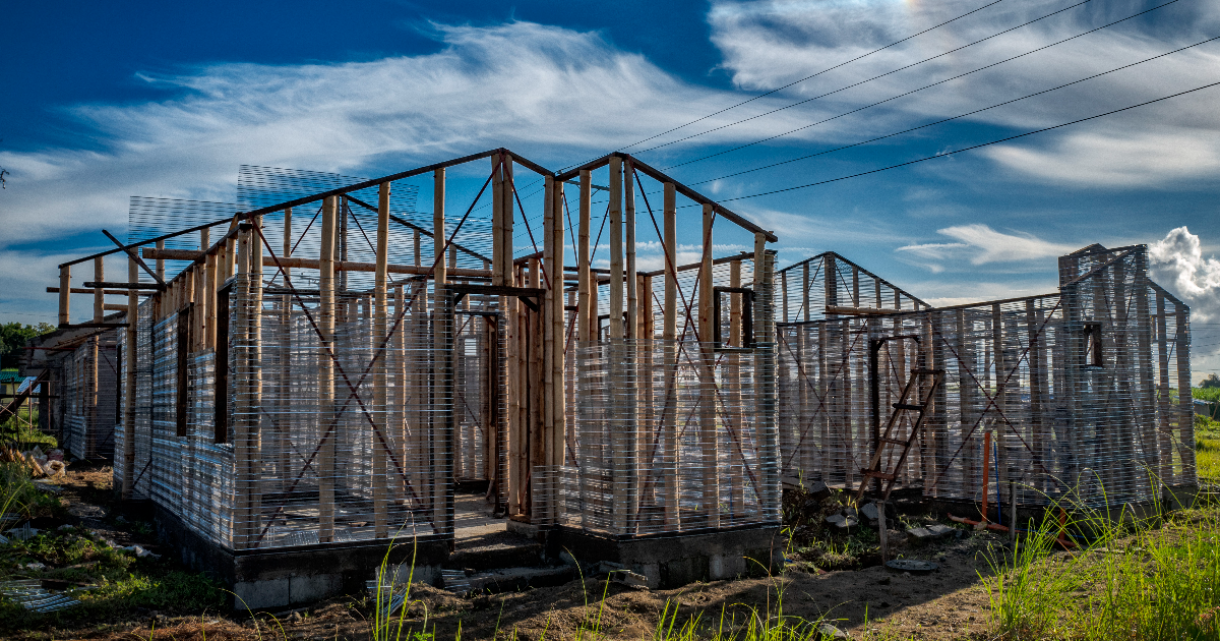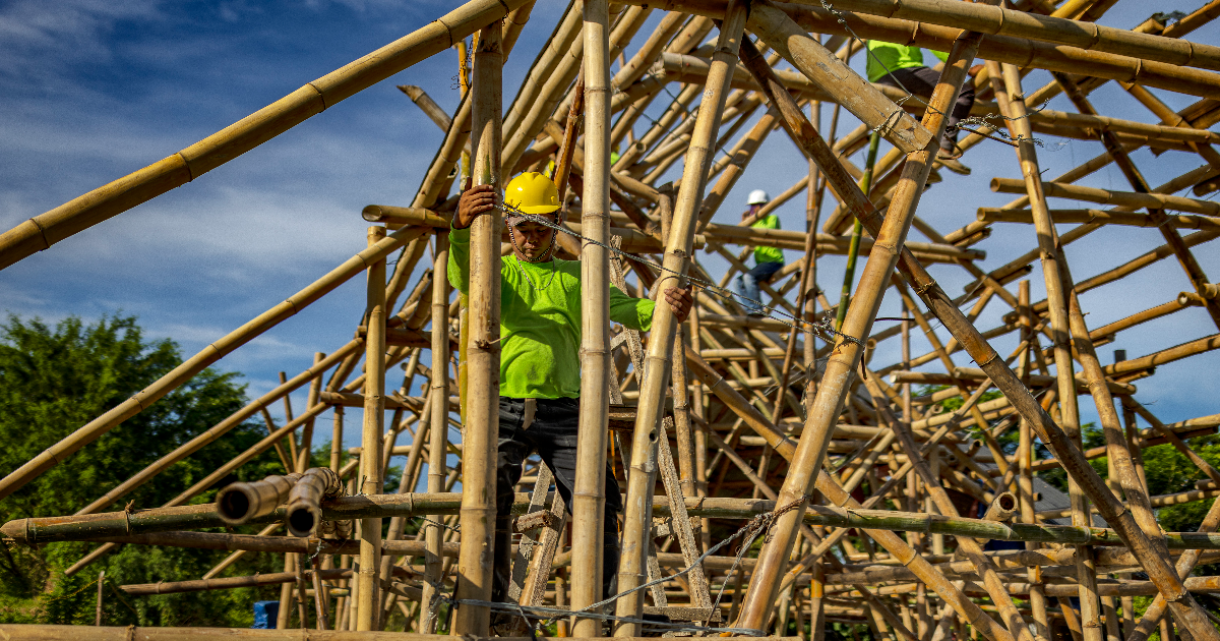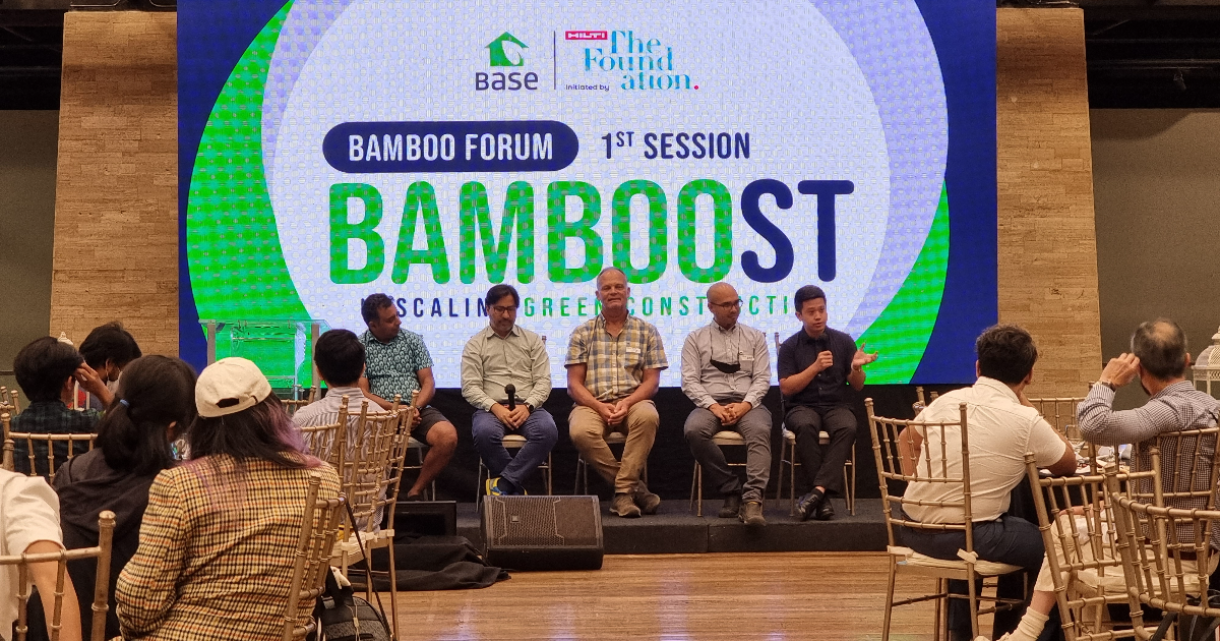Discovering the Fire Resistance of Cement-Bamboo Frame Technology
When we talk about affordable and disaster-resilient structures, we also think of alternative building technologies that are not only affordable but also durable. BASE promotes the use of bamboo as the main construction material in their bamboo-based technology called Cement-Bamboo Frame Technology (CBFT). Bamboo is one of the most abundant natural products that can be considered sustainable in the Philippines. Its attractive mechanical strength performance and stable supply paved the way for it to be considered the main structural component of CBFT.
The challenge of fire
According to the data released by the Bureau of Fire Protection, it was observed that the recorded fires in the Philippines increased by almost 40 percent last April 2023, compared to the same period the previous year. Houses made of bamboo are also susceptible to this challenge.
Bamboo, the same as other natural-based construction materials, is flammable and can catch fire. Based on the studies by Lu and Chen (2015), bamboo can be burned at a range of 250 °C to 300°C temperature. However, based on a separate study by Gutierrez and Maluk (2020), it was observed that bamboo’s mechanical strength is already affected at 200 °C, losing 80% of its compressive strength, and 30% of its modulus of elasticity. The change in strength due to temperature can be critical when bamboo is used as a structural component of housing or any construction.
Some existing studies recommend different techniques to protect bamboo against fire. One example is using borax as the fire retardant on bamboo (Yu et al. 2017) and others use charring or the method of partially burning to help extend the burning time of bamboo (Fitriana and Tsai 2017).
Although there are already studies done over the past few years, there is still much to learn to improve the fire resistance of bamboo. As this situation becomes detrimental to the community, BASE is constantly doing research to improve the fire resistance in their CBFT Homes.
BASE’s approach to improving the fire-resistive performance of CBFT
BASE along with the Department of Architecture, SAPPD, Institut Teknologi Bandung, and the Department of Mechanical Engineering, Universitas in Indonesia, collaborated to do their research on enhancing bamboo fire resistance. According to their comprehensive article, houses with plastered flattened bamboo is one of the most affordable construction methodologies that can be used in socialized housing (Tambunan et al. 2022). With the emerging use of CBFT in socialized housing, determining its fire-resistive performance rating is found crucial for research.
Upon assessing the best materials to use, a composite bamboo frame with flattened bamboo (Tad-tad) covered with mortar plastering is one of the best possible options. Mortar made of cement and sand mixture is known to withstand high temperatures. This mortar can be used as protective plastering for the bamboo, to produce the composite cement-bamboo framework of the CBFT. BASE along with institutions in Indonesia tried to test the performance of the mortar layer in protecting bamboo against fire and increasing the fire resistance of the composite bamboo shear wall through actual fire testing. It is observed that one of the main causes of the fire affecting the bamboo inside a composite shear wall is the presence of penetrating cracks in the mortar plastering. If there are no penetrating cracks, and with the optimum plastering thickness of 25 mm to 30 mm, the fire resistance of the tested sample walls can reach up to a 2-hour rating.
Continuous Research and Development
The effectiveness of CBFT in improving the overall performance of bamboo as the main structural component of socialized housing can still be improved by continuous research and development. Exploring how to maintain good quality mortar plastering, as well as consistent workmanship, can play key roles in answering the challenge of fire.
As the pioneer of the Cement-Bamboo Framework in the Philippines, Base Bahay Foundation, Inc (BASE) is dedicated not only to providing affordable and disaster-resilient structures using bamboo-based technology but also to protecting the lives and the properties these structures hold. Through continuous research in the Base Innovation Center (BIC), BASE is determined to optimize its technology and look for new applications outside its standard model. BASE also offers training courses under its Bamboo Academy program to share the alternative building technologies and provide further knowledge on bamboo construction. Learn more about BASE projects and initiatives!





